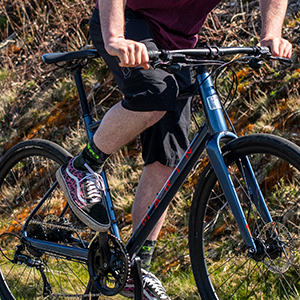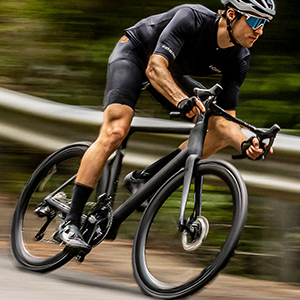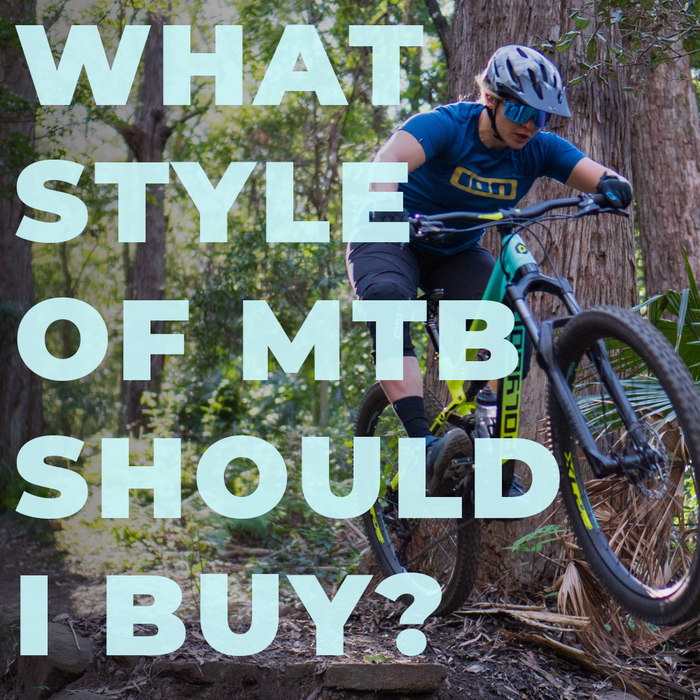Beginners Guide To Buying a Bike
There is so much information to read on bikes these days that it becomes harder and more overwhelming to buy a bike the further you dig. Bicycles online want to help you on the journey of finding the right bike the first time and with ease. This is our buyer's guide to the range of bikes we stock at bicycles online.
Contents:
- How to determine your bike
- Commuter bikes
- Flat bar road
- Hybrid
- Comfort
- Performance Road
- All road
- Gravel
- Touring/Adventure
- Mountain bikes
- Hard tail
- Dual Suspension
- Ebike
.jpg)
The first step in buying a bike is to determine where you are going to ride it. The variety of bikes now is so vast that they can be used across multiple genres. It is important to know whether you will be on the bitumen for all of your riding, whether you are going to be adventuring off the beaten path or whether you are looking to push your limits on a bike.
.jpg)
Once you have decided where you want to ride, it is important to realise what you use the bike for. A carbon road bike is going to fly along the road and sealed paths, but the lightweight parts and frame are not built for the rigours of everyday commuting. When going off-road, you may think that you need full suspension MTB, but a gravel bike or hybrid may be better suited.
.jpg)
.jpg)
.jpg)
It is important to be honest with yourself when determining where and how you will ride your bike because any exaggeration could result in you getting the wrong bike. You have to consider the terrain you will be riding on, whether you will be carrying stuff on the bike, and how far you will be riding.
For anyone looking to commute, it is best to look at what you are going to carry, what you will wear and how difficult the road will be. For example, if you are taking work clothes, a computer and books, you will want to get that off your back and on the bike. It will be integral to get a bike with rack mounts to hold panniers. If you wear your uniform, you want to have a bike with mudguards to protect your clothes. If you are commuting on rough roads and perhaps unsealed tracks, you don't want a flat bar road bike but a bike that you can ride comfortably and safely.
.jpg)

Flat Bar Road
Flat bar road bikes are lightweight, fast and agile bikes based on their road bike cousins. These bikes are often designed to enhance speed and efficiency over comfort and durability. These bikes are perfect for riders looking to add some zest to their ride.
The biggest differences between flat bar road bikes and standard road bikes are the bars. The flat bars on these bikes are simpler, provide conventional cockpit controls and offer a more upright riding position. Perfect for smooth roads and those looking to cover more ground fast.
.jpg)
A more standard urban or commuter bike is heavier, has a relaxed riding attitude and has fatter tyres for more comfort. Because the flat bar road bikes have narrower tyres and stiffer frames, riders will feel more feedback from the road. If you want more comfort, look at a commuter bike; if you want more speed and agility, look at a performance road bike.
(2).jpg)
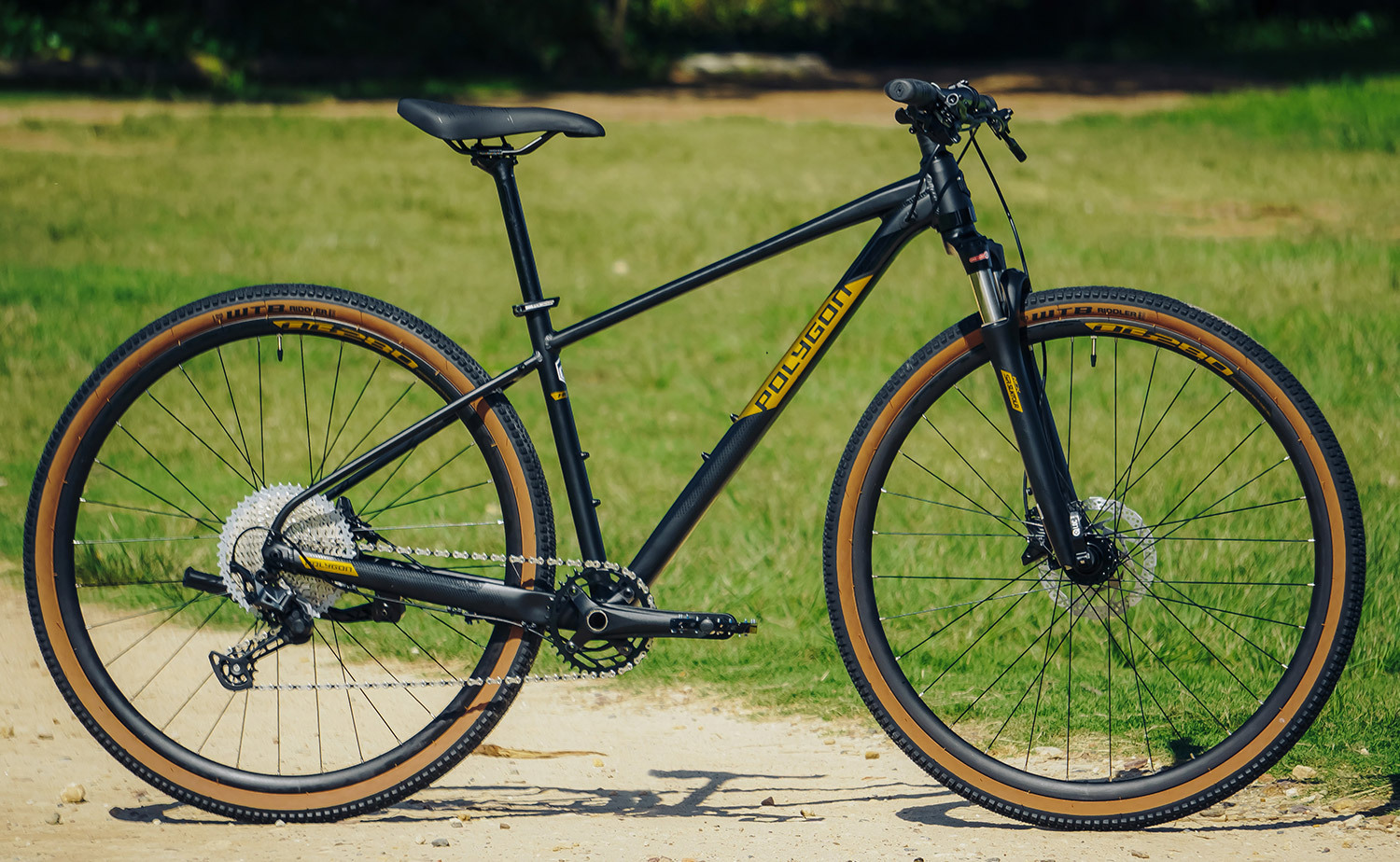
Hybrid
Hybrid bikes are a mix of a commuter bike, a gravel bike and a mountain bike. They take the benefits of all three styles and throw them into a blender. Comfort, efficiency and durability are the three main ingredients of a hybrid bike.
.jpg)
Hybrids will have semi slick tyres to provide grip on a loose surface and speed on a smooth surface. The front of the bike is tall and you often have ergonomic grips to raise your riding position while providing comfort through your hands. The 60-80mm of travel offers some shock absorption for the unseen pothole you will inevitably hit. Finally, an MTB style frame is strong and has plenty of mountings for rack and barriers.
.jpg)
While it may resemble a mountain bike, the hybrid is designed for light off-road use and shouldn’t be taken down any trail that gets too crazy. They are more efficient than an MTB and less efficient than a flat bar or commuter. They are the perfect bike for those who ride mixed terrain and use their bike for everyday chores.
.jpg)
.jpg)

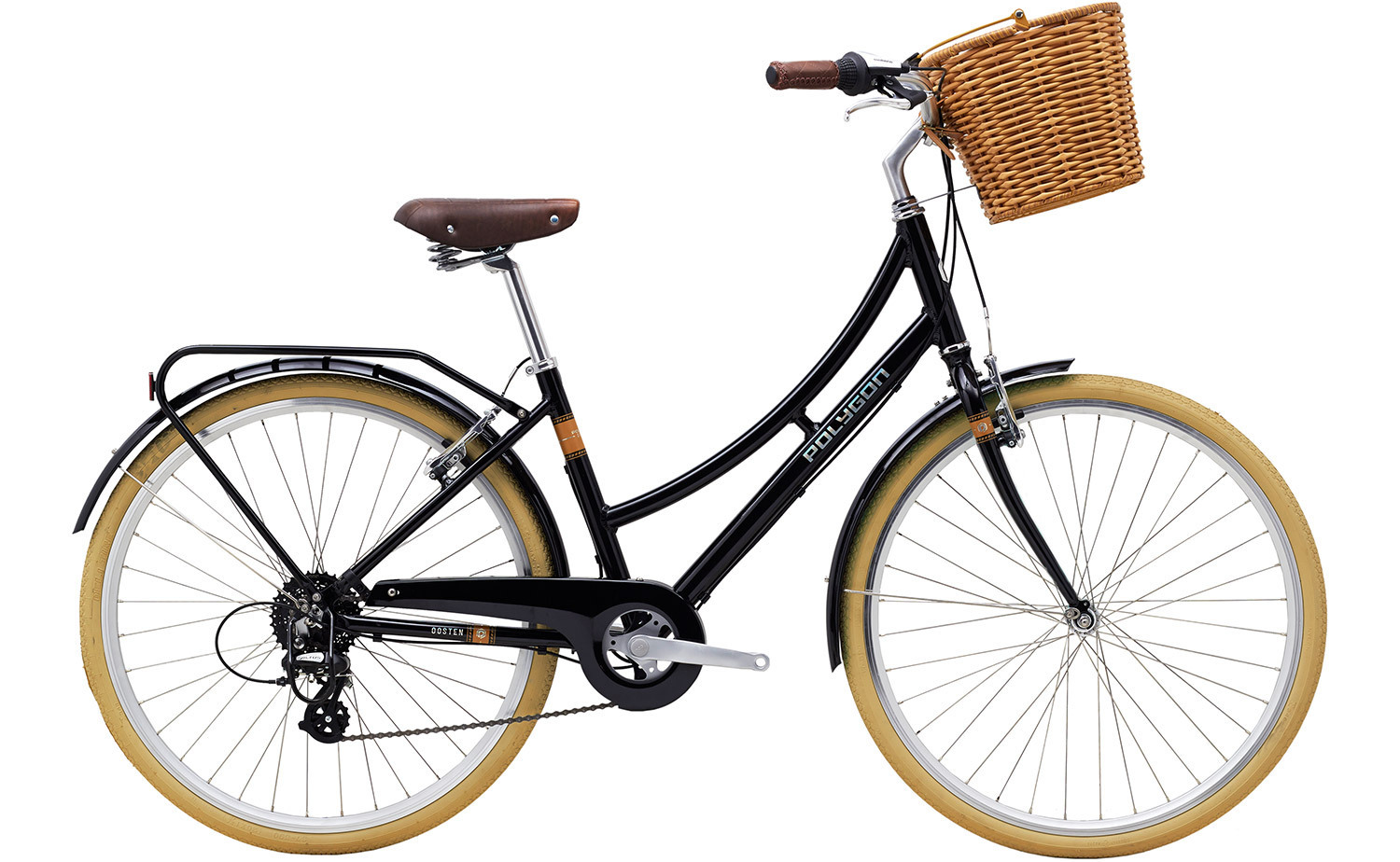
Comfort:
Many riders are happy to sit up and relax as they cruise down the coast or through the parks. Comfort bikes are created on the same foundations that make bikes in Holland so popular. They include an upright riding position, a comfortable seated position and ergonomic controls. You may not be able to ride at hyper speed on these bikes but, you will enjoy the scenery and experience much more deeply.
(1).jpg)
.jpg)
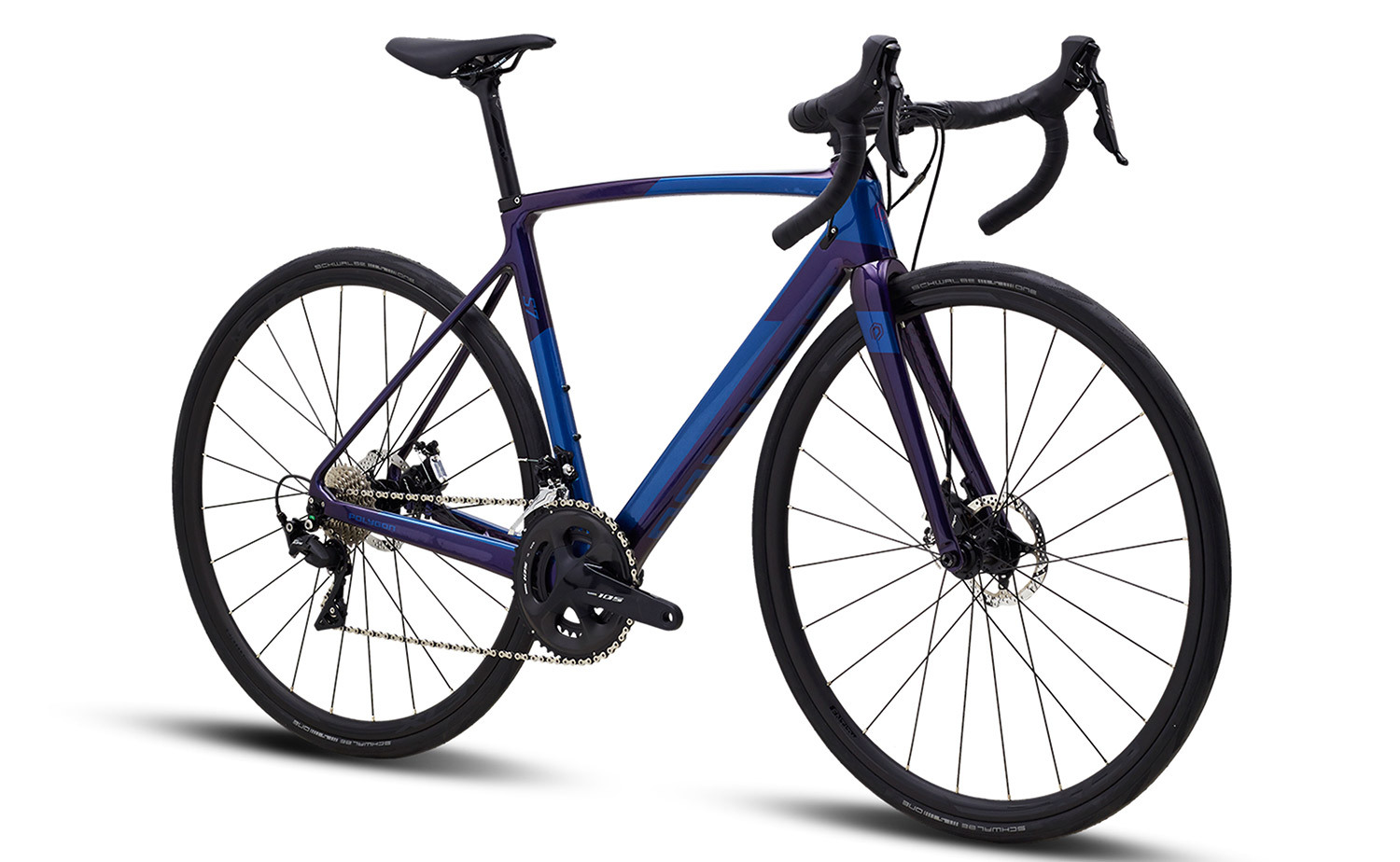
Road
The road bike market is no longer just skinny wheels and funny looking bars on a basic frame. We have lightweight road bikes, aero speed machines, all road bikes, cyclocross bikes, gravel bikes and adventure/touring bikes.
Again, once you have determined the terrain and how you will use your bike, deciding which road bike is for you becomes much easier. Like urban bikes, there is some crossover when it comes to use cases. So there are two or more options for each style of bike.
.jpg)
If you are purely racing or chasing personal bests on sealed roads, then an aero or lightweight road bike will be perfect for you. The lightweight road bikes are perfect for attacking steep hills, climbing at speed and provide a more comfortable ride. Aerodynamically optimised road bikes are a bit heavier due to the thicker tubing, but they are slick through the air. On flatter ground and when at speed, they make you feel like you are cheating.
.jpg)
.jpg)

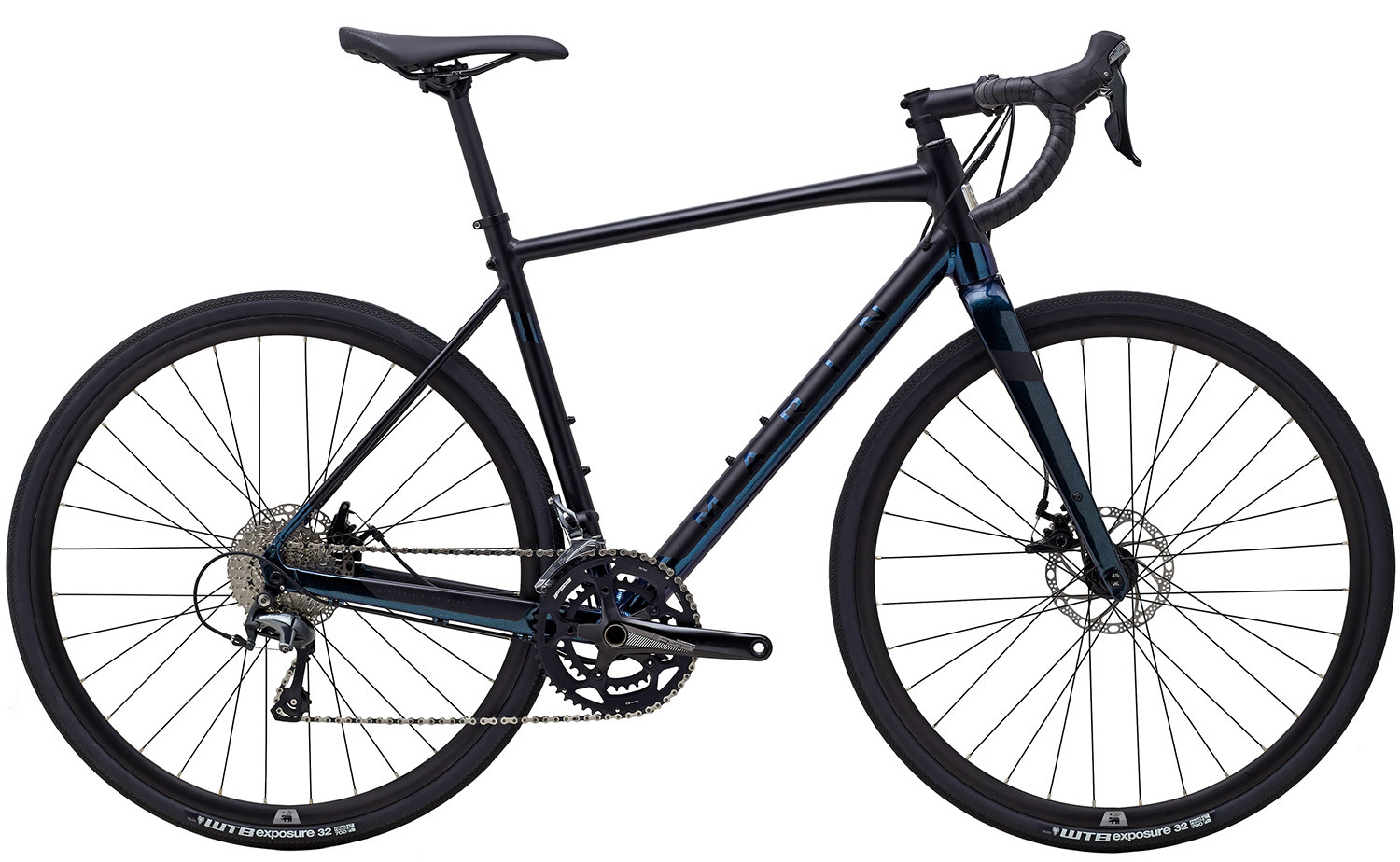
All Road
If you just want a bike to ride on the road, explore further than you have been before or just enjoy a ride along the coast, an all-road bike will suit you better. While only slightly heavier than the “race” bikes above, the stability and comfort are miles better.
.jpg)
The bikes are more comfortable with fatter tyres, a wider gear range, and a more upright riding position. However, All Road bikes are designed to remain fun and agile. They really blend everything to provide the best overall package for those looking to ride a bit of everything. If you are looking for something a bit more comfortable and burly, a gravel bike may be for you.
.jpg)
.jpg)
.jpg)

.jpg)
Gravel
Gravel bikes are the next level of all road bikes, designed primarily for exploring off the sealed path and deep into nature. With bigger tyres up to 45mm wide, wider handlebars, geometry optimised for stability and many comfort features, this style of bike is extremely versatile.
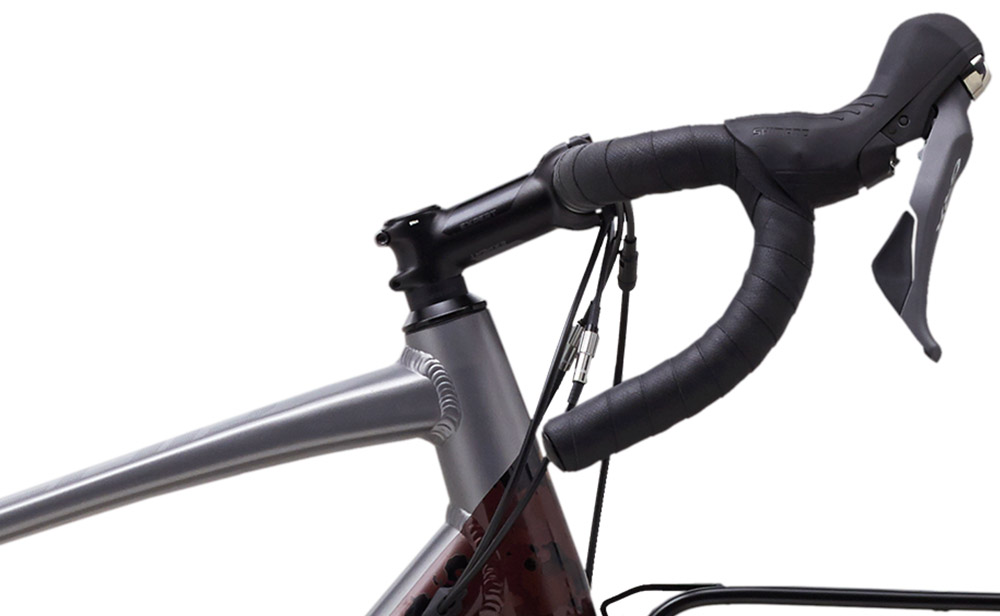
While most gravel bikes arrive with semi slick tyres (knobs on the outer edges), you can change them to fully slick for the road or fully knobbly when the terrain gets loose. Because of the comfortable riding position and relaxed geometry they make great commuters or for long adventures. However, the geometry will never make a gravel bike feel as agile as a performance road bike.
.jpg)
With high volume tyres that are knobbly, you can ride rough roads in comfort. While they are designed for mountain bike tracks, they hold speed exceptionally well on backcountry tracks or routes that would destroy conventional road bikes. If you are looking to explore places well off the beaten path and may get rowdy, gravel bikes are for you. To get even more comfort and reliability, a touring bike may be better suited.
.jpg)
.jpg)

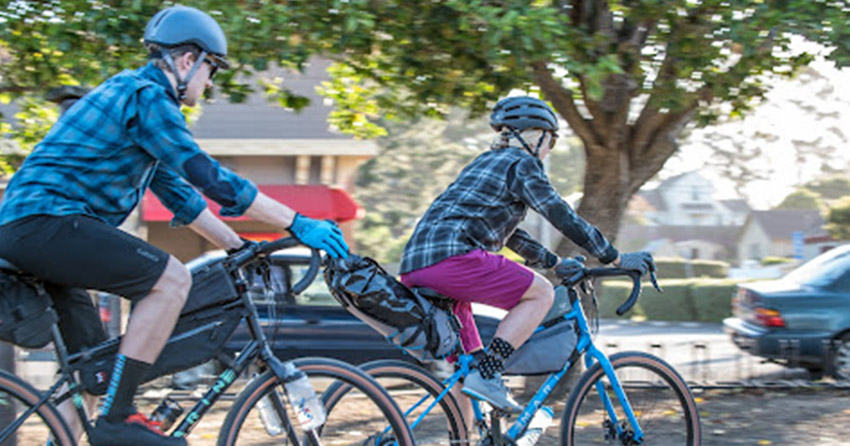
Adventure/Touring
Touring bikes are primarily focused on comfort and reliability as they are used for multi-day adventures. Tall front ends set you up in an upright position so you can pedal all day in comfort. They are built strong to reduce any chance of mechanical failures in the middle of nowhere or have you stranded on the side of the road.
.jpg)
The frames are bigger and more open to fit bags and multiple bottles. Steel is a preferred material because it can provide strength and comfort with small tubing. The downside to this styling and reliability is weight. Adventure or touring bikes are quite heavy and to combat this, they have easier gearing. These bikes are designed for meandering, not speeding at full speed full time. If you are stretching the capabilities of gravel or adventure bikes, a mountain bike may be better suited for your riding.
.jpg)
When the terrain gets rocky, rooty and loose, a mountain bike may be better suited. Mountain bikes often provide a more comfortable pedalling position, and the suspension offers tonnes for traction. There are two main types of mountain bikes, dual suspension and hardtail. Hardtails are lighter and more efficient than their dual-suspension siblings. Dual suspension bikes provide more comfort and traction when riding gets wild.

Hardtail
While hardtails are mountain bikes, they are a popular option for commuters thanks to their comfort and robustness. 29-inch hardtails are like the big brothers of urban bikes. Big 2.25 inch tyres, 100mm of travel and relaxed, stable geometry. While they may be more robust and comfortable, they can be slower due to the extra rolling resistance and weight. Want something lighter but with similar benefits? Check out the hybrid bikes.
.jpg)
Riding off-road on a hardtail is more efficient than a Dual Suspension bike; however, it requires more skill. Because the rear wheel is fixed and doesn’t move, the bike doesn’t forgive many mistakes. When used well, they are efficient and fun to ride off-road. Hardtails are the perfect bike for xc racing, big off-road epics, and riding in comfort around town.
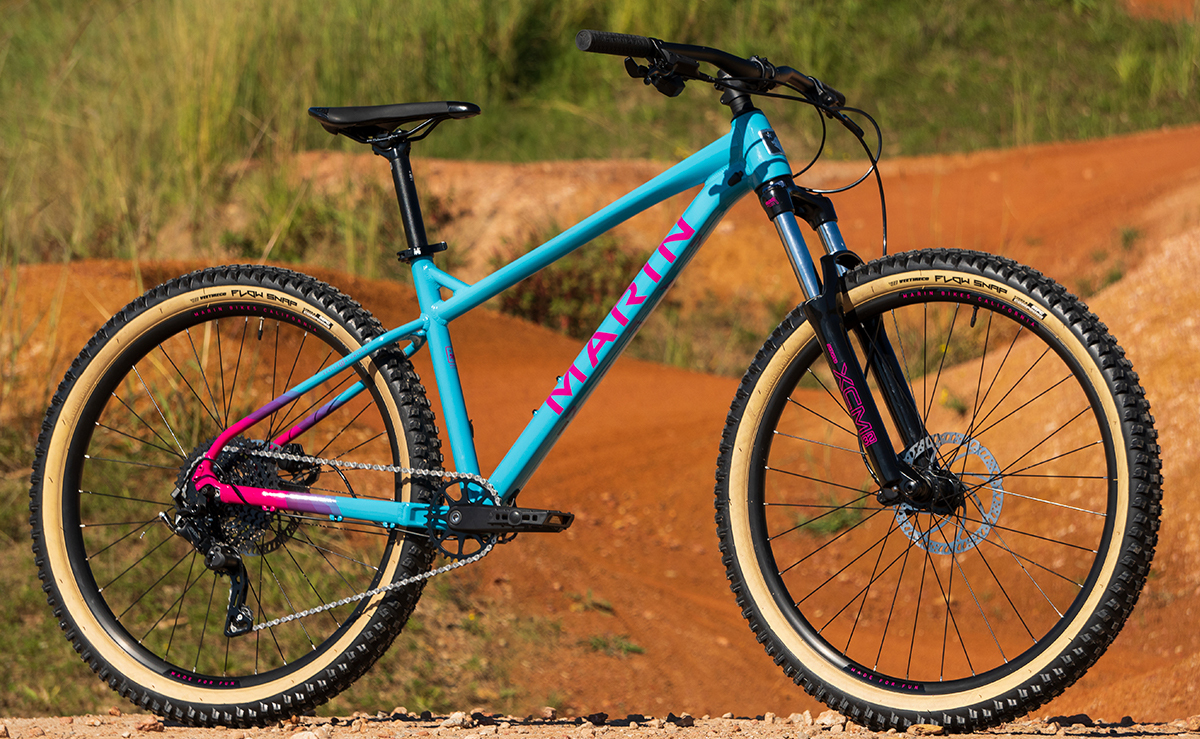
Heaving hardtails can also give you more bang for your buck when you are on a budget. Often with slacker head angles and a longer wheelbase, they are built for stability at speed. You can benefit from better components on a hardtail than settling for lower spec on a cheap dual-suspension when you have limited funds.
.jpg)
.jpg)
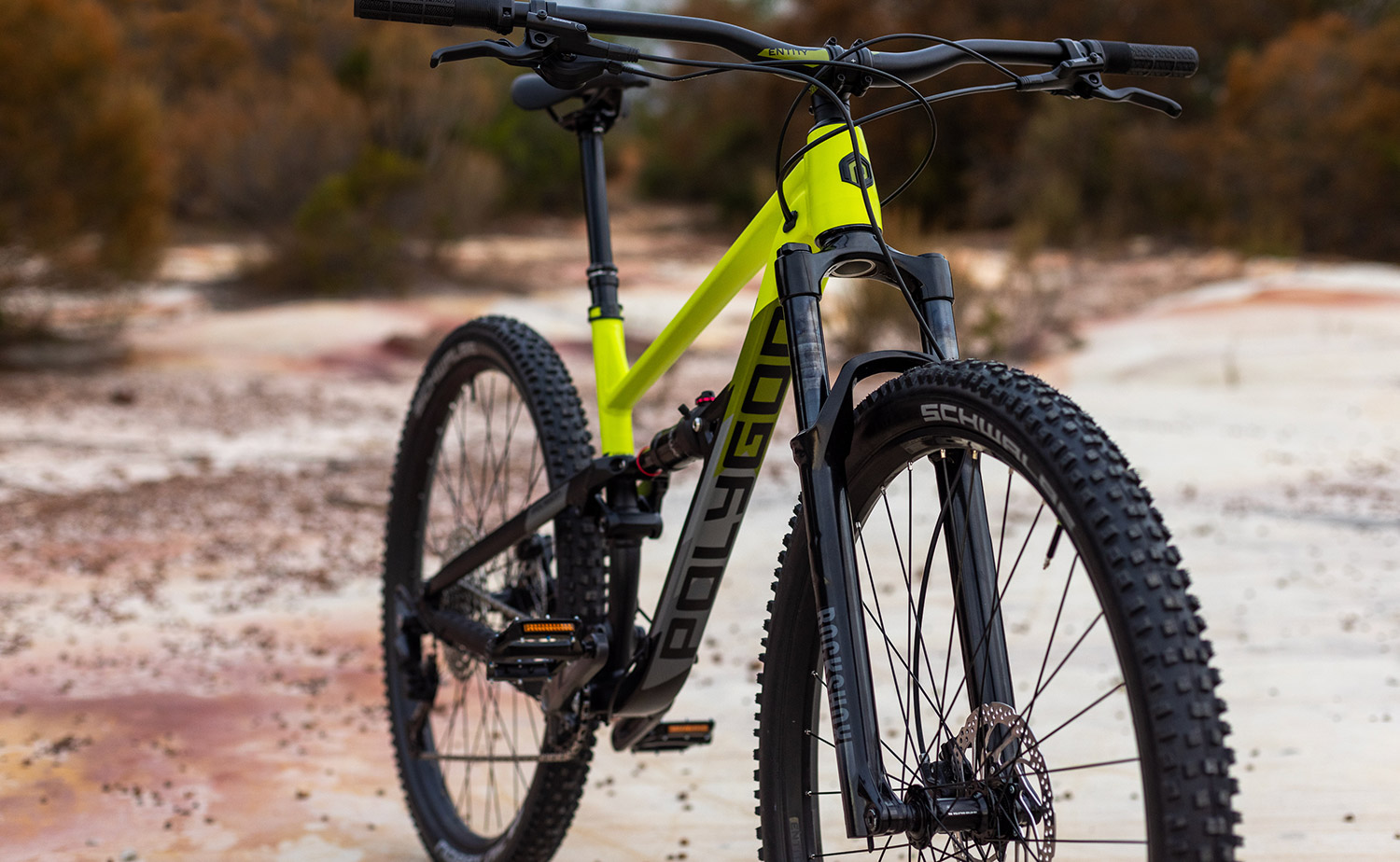

Dual Suspension
Dual suspension bikes are designed for the roughest terrain and riders who want to push their boundaries. The front and rear wheels travel anywhere from 100 to 200mm up and down. This travel can provide tonnes of traction, extra comfort, and with more travel, there is more room to make mistakes.
.jpg)
More travel doesn’t necessarily mean a better ride; Bicycles Online often say it is best to get the least amount of travel for your riding. A 160mm enduro bike is built to go super fast downhill and winch up again; it is not suited to race multiple laps at maximum speed for hours. While a 100mm xc bike can be raced down a hill as fast as possible, it takes skill and finesse to do so.
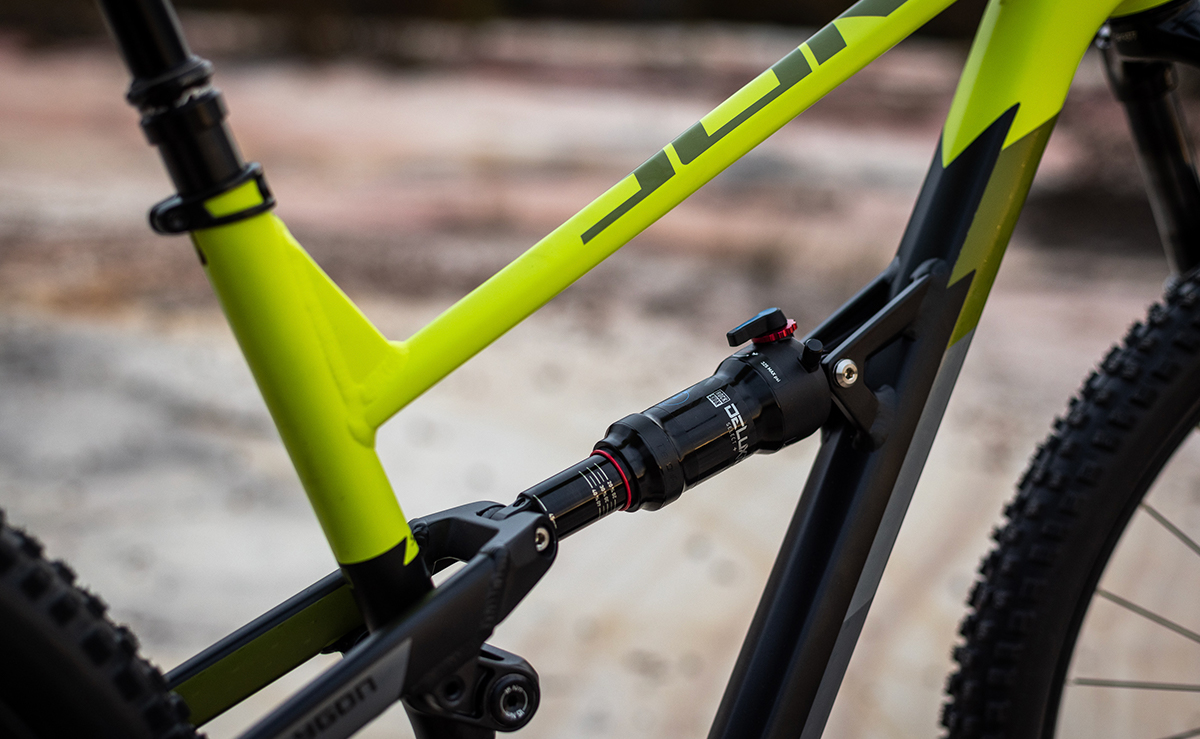
Due to the extra weight and the suspension often rob pedal power from the rider to the wheels. While the bigger 2.3-2.6 inch wide tyres add a lot of traction off-road, they add a lot of drag on the road. If you are commuting or looking to ride on the street, these aren't the bikes for you.
Like road bikes, there are multiple types of mountain bikes suitable for different riding. Xc bikes are efficient and fast up hills or on the flat. All-mountain or trail bikes are the swiss army knives of mountain bikes, ready for anything but not perfect for anything. Enduro bikes are designed to winch themselves uphill and bomb back down at warp speed. Ideal for those who want to push their boundaries down a hill. Unless you are riding on rough terrain that requires traction, not many people need a dual suspension MTB. If you need a bike with some extra traction but not a full suspension bike, checkout our hardtail; look at our urban hybrids if you want a commuter with comfort.

.jpg)
.jpg)

.jpg)
Ebike
E-Bikes are the biggest growing market in the world of cycling at the moment for good reason. Riders can go further, fast and with much less effort, taking everyday riding and boosting the experience tenfold. With the E-Bike scene booming, the bikes are becoming more refined, and bicycles are becoming more specific to each user. In this blog, we take you through the different styles of bikes and how they benefit.
.jpg)
Riding bikes uphill to go back down is a massive chore to some. Grinding up hills slowly can be mundane and unenjoyable on some bigger travel bikes. It is inescapable. E-Bikes transform big-hitting bikes into spritely mountain goats on the ups. Climbing now takes skill and attention as you are hitting corners, roots and rocks much faster. While it may seem lazy, this new way of climbing requires more physical effort from your entire body and provides a new challenge. For those who want to cruise up and enjoy the downs, that is perfectly fine as well.
.jpg)
E-Bikes are like a gift from above for those who have minimal time to get out on the bike. An hour of power used to mean a quick 10-15km loop in the morning before or after work when you could squeeze in time. With an E-Bike, you can now smash out 15-20kms in the same time frame. It is perfect for those with very little time to get their usual ride plus more into the hour they have.
.jpg)
Hopefully, you have managed to narrow down which bike will enhance your riding experience the most. We will be creating more specific buying guides over the next few months. Once you have narrowed down which bike works best for you, head over to those pages when you need more info, don’t forget to subscribe to our newsletter, so you don't miss out on any news.
 AUS
AUS USA
USA




.jpg)














.jpg)
.jpg)
.jpg)

.jpg)
.jpg)
